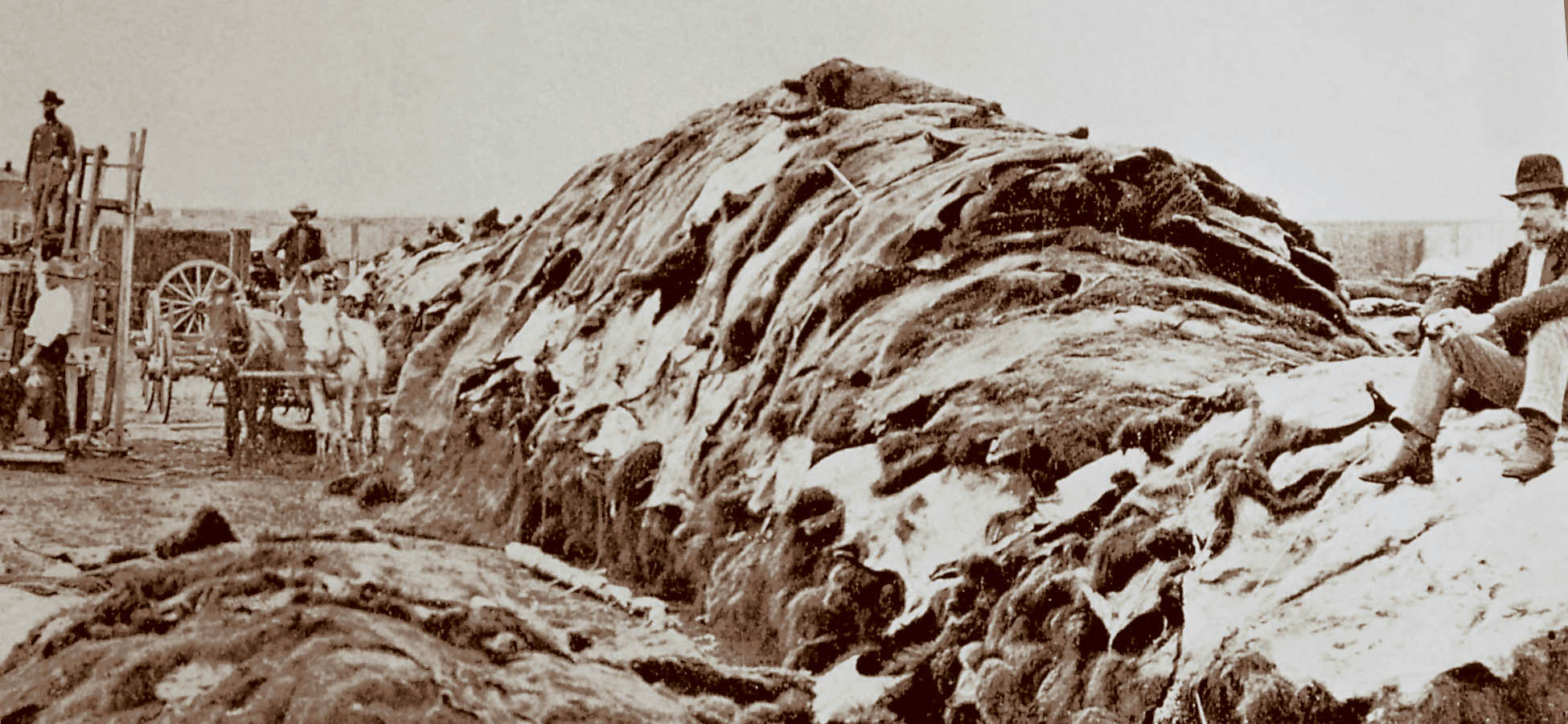The fur trade along the Missouri River had many changes over the years. The tribes had lost so many people to the smallpox epidemic that they did little trading with the post. Beavers and other fur-bearing animals became scarce because of over-trapping. Some kinds of animals became scarce because of too much trapping.

Figure 67. Bison hides were valuable to the frontier trader. (National Park Service)
Another event also caused the fur trade to fail. In the 1830s, silk hats replaced beaver hats in fashion. Manufacturers in the United States and Europe now wanted bison hides and meat. These were shipped to cities in the eastern United States and also to Europe. People on the East Coast also thought that bison tongue was a special treat to eat, so every year, thousands of pounds of bison tongues were shipped down the Missouri River. The trade in bison hides, robes, and tongues resulted in the killing of millions of these animals.
Fort Clark closed in 1861. The old fur trade was no longer a good business. Many of the fur-bearing animals had become scarce. The market for furs was no longer profitable.
In 1867, Fort Union was abandoned. This trading post had been in business for almost 40 years and had shipped millions of furs down the Missouri River. After Fort Union was abandoned, it was taken apart and its lumber was used to build the U.S. Army fort, Fort Buford. The fur trade era of the Upper Missouri had come to an end. Fort Union has now been partly reconstructed and is called the “Fort Union Trading Post National Historic Site.”


